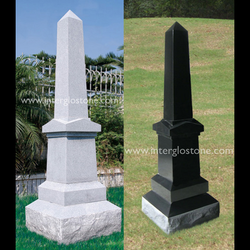Over the long-haul convictions and customs, once in the past ideas to be written in stone, start to change and blur taking on new significance and new reason. How we care for our friends and family after their passing holds critical sociological and anthropological importance and the history behind it very well may be astounding. What was a charming beloved memory of an age is, indeed, connected to a great many long periods of custom and strange notion? This is the history behind tombstones and the root of present-day memorial service customs and conventions. In the stone age, when people were as yet roaming in nature, the dead would be covered and an incredible stone or rock moved on the grave. These stones were called Headstones and their motivation was to keep the perished from ascending after death, a dread still common in present-day society. These tombstones, and the notion of directing their utilization, endured as clans started settling down. Yet, as time wore on the rocks and stones were supplanted with more advanced grave markers called tombs.
Importance of stones used in the graveyard

The most recognized gathering of tombs goes back more than 2,000 BC is known by the moniker “Stonehenge.” Located in Wiltshire, England, the reason for the Stonehenge was acknowledged in mid-2008 by a group of archeologists upheld by the National Geographic’s Committee for Research and Exploration. A dominant part of the world’s marvels, from the pyramids in Egypt to the long-term old stone age graveyard that is the Stonehenge, is an encapsulation of our relationship with death and misfortune. As the social structure of humankind turned out to be more inactive, entombment strategies driven by dread and leaked with odd notions changed into a memorable craving and honor for the dead. Mesopotamian and antiquated Egyptian societies accepted the after-world existed inside the Earth thus their preserved friends and family were covered inside the ground alongside their devices of exchange and any resources to help their entry. It was accepted when a precursor was overlooked, they stopped to exist, and even though the after-universe of antiquated Egypt and Mesopotamia was accepted to be a dim shadowy spot, non-presence was considered far more terrible than death.
Pyramids are developed for the identity of the graveyard
Burial chambers and enormous pyramids were raised in a Pharaoh’s name and picture, while those of basic birth was covered near the home with graves tended to consistently. Stones cut into the perished resemblance would be set on a “mastaba,” signifying ‘seat’, to safeguard their memory. In antiquated Greece, recognition of the dead was viewed as likened to community obligation, every individual answerable for the honor of their predecessors. They also accepted the great beyond occurred in the Earth and their dead were covered in burial chambers and graves canvassed in marble and stone. Although various states watched diverse entombment customs, each thought to be critical to their cherished one’s section to the after-world, protecting the memory of your predecessor was viewed as generally significant. Stone sculptures were cut in the resemblance of the dead and put over the entombment site and in certain states, youngsters were named after their grandparents.

